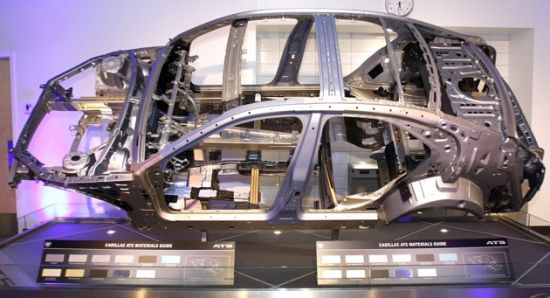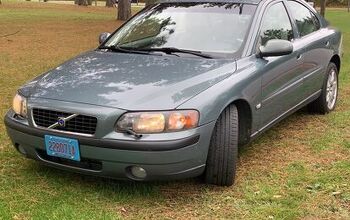Alpha: General Motors Last Hope For The Commodore
-Mike Devereux, Holden’s former Managing Director, in November, 2012
Those ominous words spoken by Mike Devereux last year have taken on an almost eerie significance in light of yesterday’s events. After more than a half century of building cars in Australia, Holden will now become a “national sales company”, ostensibly selling rebadged global General Motors products, manufactured in places like Korea and Thailand.
But veiled remarks about the Australian auto industry aren’t the only words uttered by Devereux that caused us to take notice. At the launch of the latest VF Commodore, Devereux made a vague statement about the Commodore’s future, implying that it would be built on a global platform at the Adelaide factory. While the latter is no longer possible, there’s still hope that the Commodore could live a GM architecture. The only question is, which one?
Originally, Devereux claimed that two global architectures were coming to Adelaide after 2016 – and one of them would be the next Commodore.
“This [Commodore] will run through to the end of 2016. After that time we are going to be putting two global architectures into the [Adelaide] plant, one of them will underpin the next Commodore.”
To make sure he wasn’t misunderstood, Devereux repeated: “There is another Commodore coming after this one. We’re going to build it in Adelaide on a [global] architecture.”
While production at Adelaide is off the table, there is still the matter of which architecture could be used, with two schools of thought on the matter.
The predominant theory is (or was – until Holden decided to close up shop) that the Commodore would move to the front-drive Epsilon II architecture, and become little more than a rebadged Chevrolet Impala or Buick Regal (media reports suggested that the next Commodore would be a front-drive car the size of a Toyota Camry and sold as a Buick in other markets).
There are plenty of good reasons to do this. Despite the broad fanfare the rear-drive Aussie sedans attract among North American enthusiasts, they are similar to other enthusiast pet interests, in that their sales and profitability does not measure up to the mythology surrounding them. Australian car buyer tastes have shifted away from cars like the Falcon and Commodore to smaller, more fuel-efficient cars – attributes better suited to front wheel drive platforms than rear drive layouts.
Smaller cars like the Toyota Corolla, Mazda3 and Hyundai i30 are dominating the sales charts currently, along with pickups like the Toyota HiLux. Hanging on to fifth place is the Holden Commodore, which is enjoying its strongest sales in some time. But even then, front drive rivals like the Toyota Camry aren’t far behind (the Camry currently sits in 9th place). The market for sedans is still there, but which wheels are driven may not matter as much.
However, the Commodore brand is not just another nameplate. Is is arguably Australia’s national car, and a front-wheel drive Commodore would be a dramatic departure from the familiar formula that Australians are used to. General Motors experiment with a Holden badged Malibu (based on Epsilon II) hasn’t been terribly well received either.
That leaves another global platform in GM’s selection, one that drives the proper wheels and crucially, has the potential for scale. The Alpha platform, currently used only on the Cadillac ATS and CTS, and eventually, the next generation Camaro, could make for a very nice next-generation Commodore. Its use as a CTS shows that it can be adapted to the size that Aussie full-size buyers (or what’s left of them) expect in a Commodore. The platform can accommodate everything from GM’s 2.0T 4-cylinder, to the 3.6L V6 in both turbo and naturally aspirated forms and crucially (for marketing, purposes at least) whatever V8 the next-generation Camaro opts for.
The three nameplates using Alpha right now won’t allow for significant volumes, given that they are luxury and nice sports car vehicles. But a new Commodore – sold as a Holden in Australia, a Buick in China and the United States and perhaps even as another sporty Chevrolet as a successor to the SS – could help Alpha get the volume it needs, while leaving Commodore diehards happy. Of course, it wouldn’t be built in Australia. Only GM’s Lansing, Michigan plant and a factory in Shanghai build Alpha. A Made In China Commodore, no matter how good, is probably the opposite of what Holden wants to deal with from a marketing perspective.
I’m not going to pretend that this is anything other than a bit of wishful thinking sprinkled with a basic understanding of auto industry economics. Nevertheless, I find it hard to believe that GM would go to the trouble of engineering an all-new rear-drive architecture and restrict it to three nameplates that will do 99 percent of their volume in North America. There has to be further use for Alpha, and I hope that the next Commodore is one of them.
More by Derek Kreindler
Latest Car Reviews
Read moreLatest Product Reviews
Read moreRecent Comments
- Arthur Dailey We have a lease coming due in October and no intention of buying the vehicle when the lease is up.Trying to decide on a replacement vehicle our preferences are the Maverick, Subaru Forester and Mazda CX-5 or CX-30.Unfortunately both the Maverick and Subaru are thin on the ground. Would prefer a Maverick with the hybrid, but the wife has 2 'must haves' those being heated seats and blind spot monitoring. That requires a factory order on the Maverick bringing Canadian price in the mid $40k range, and a delivery time of TBD. For the Subaru it looks like we would have to go up 2 trim levels to get those and that also puts it into the mid $40k range.Therefore are contemplating take another 2 or 3 year lease. Hoping that vehicle supply and prices stabilize and purchasing a hybrid or electric when that lease expires. By then we will both be retired, so that vehicle could be a 'forever car'. Any recommendations would be welcomed.
- Eric Wait! They're moving? Mexico??!!
- GrumpyOldMan All modern road vehicles have tachometers in RPM X 1000. I've often wondered if that is a nanny-state regulation to prevent drivers from confusing it with the speedometer. If so, the Ford retro gauges would appear to be illegal.
- Theflyersfan Matthew...read my mind. Those old Probe digital gauges were the best 80s digital gauges out there! (Maybe the first C4 Corvettes would match it...and then the strange Subaru XT ones - OK, the 80s had some interesting digital clusters!) I understand the "why simulate real gauges instead of installing real ones?" argument and it makes sense. On the other hand, with the total onslaught of driver's aid and information now, these screens make sense as all of that info isn't crammed into a small digital cluster between the speedo and tach. If only automakers found a way to get over the fallen over Monolith stuck on the dash design motif. Ultra low effort there guys. And I would have loved to have seen a retro-Mustang, especially Fox body, have an engine that could rev out to 8,000 rpms! You'd likely be picking out metal fragments from pretty much everywhere all weekend long.
- Analoggrotto What the hell kind of news is this?


































Comments
Join the conversation
How to Save Holden: maybe they need to go to alpha numeric nameplates, close a bunch of dealers and force the rest to spends millions on unnecessary facility upgrades. then develop the world's most intricate and confusing incentive structure while hiring overpaid and useless spokesmen to populate idiotic and meaningless advertisements featuring distress pricing and clowns. oh wait, that segment is already taken by GMNA. Buickman Founder GeneralWatch.com
Oh, I'm so with you on that one, Buickman!